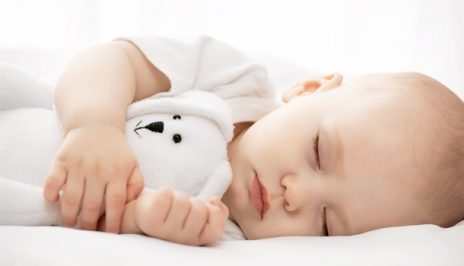Sleep tips for 1-11 months infants

WSPID 2013 CONGRESS
2018/01/06
Common cold in babies
2018/01/06Sleep tips for 1-11 months infants

Sleep tips for 1-11 months infants
Newborns express their need to sleep in different ways. Some fuss, cry, rub their eyes or indicate this need with individual gestures. It is best to put babies to bed when they are sleepy, but not asleep. They are more likely to fall asleep quickly and eventually learn how to get themselves to sleep. Newborns can be encouraged to sleep less during the day by exposing them to light and noise, and by playing more with them in the daytime. As evening approaches, the environment can be quieter and dimmer with less activity.Sleep Tips for Newborns
Observe baby’s sleep patterns and identify signs of sleepiness.
Put baby in the crib when drowsy, not asleep.
Place baby to sleep on his/her back with face and head clear of blankets and other soft items.
Encourage night-time sleep.
Sleep and Infants (4-11 months)
By six months of age, nighttime feedings are usually not necessary and many infants sleep through the night; 70-80 percent will do so by nine months of age. Infants typically sleep 9-12 hours during the night and take 30 minute to two-hour naps, one to four times a day – fewer as they reach age one.
When infants are put to bed drowsy but not asleep, they are more likely to become “self- soothers” which enables them to fall asleep independently at bedtime and put themselves back to sleep during the night. Those who have become accustomed to parental assistance at bedtime often become “signalers” and cry for their parents to help them return to sleep during the night.
Sleep Tips for Infants
Develop regular daytime and bedtime schedules.
Create a consistent and enjoyable bedtime routine.
Establish a regular “sleep friendly” environment.

سرما خوردگی در کودکان
2017/12/26
کنگره جهانی بیماریهای عفونی کودکان
2017/12/26نوزادان 1 تا 3 ماهه نیاز خود به خواب را به روش های گوناگونی بیان می کنند. بعضی با سر و صدا، گریه، مالیدن چشم ها و دیگر نشانه های منحصر به فرد نیاز خود را بیان می کنند. بهتر است که در هنگامی که نوزاد خواب آلود است او را به تختش ببریم و نگذاریم که در خارج از تخت بخوابد. با این روش نوزادان سریع تر می خوابند و یاد می گیرند تا بدون کمک مادر و پدر بخوابند. می توان نوزادان را در طول روز در معرض نور و صدا قرار دهیم تا کمتر بخوابند، و در طول شب محیطی آرام و مناسب خواب برایشان فراهم کنیم تا الگوی خوابشان مرتب شود.
نکاتی برای خواباندن نوزادان
الگوی خواب نوزاد را پیدا کرده و نشانه های خواب آلودگی اش را یاد بگیرید.
هنگامی که نوزاد خواب آلود است و هنوز نخوابیده است در تخت یا گهواره قرار دهید.
نوزاد باید روی کمر بخوابد و سر و صورتش به سمت بالشت یا هر چیز نرم دیگر نباشد.
کودک را به خوابیدن در طول شب تشویق کنید.
الگوی خواب کودکان 4 تا 11 ماهه
وقتی کودک به 6 ماهگی برسد، شیر دادن به او در طول شب دیگر ضروری نیست. 20 تا 30 درصد کودکان بالای 6 ماه در طول خواب شب بیدار نمی شوند و باقی آنها وقتی به 9 ماهگی برسند این اتفاق برایشان می افتد. کودکان 4 تا 11 ماهه، 9 الی 12 ساعت در طول شب، و 1 تا 4 بار و به مدت 30 دقیقه الی 2 ساعت در طول روز می خوابند. این روند با افزایش سن آنها کاهش می یابد.
در صورتی که قبل از اینکه کودکان به خواب بروند در تخت باشند، احتمال اینکه یاد بگیرند به تنهایی بخوابند بیشتر می شود. این موضوع به آنها کمک می کند تا در صورتی که در طول خواب شب بیدار شوند، دوباره خودشان به خواب بروند و به کمک والدین نیاز نداشته باشند.
نکاتی برای خواباندن کودکان 4 تا 11 ماهه
ساعات معینی برای خوابیدن و بیدار شدن آنها در نظر بگیرید.
عادات خواب لذت بخش و همیشگی برای آنها تعیین کنید.
محیط را برای خوابیدن آنها فراهم نمایید.



